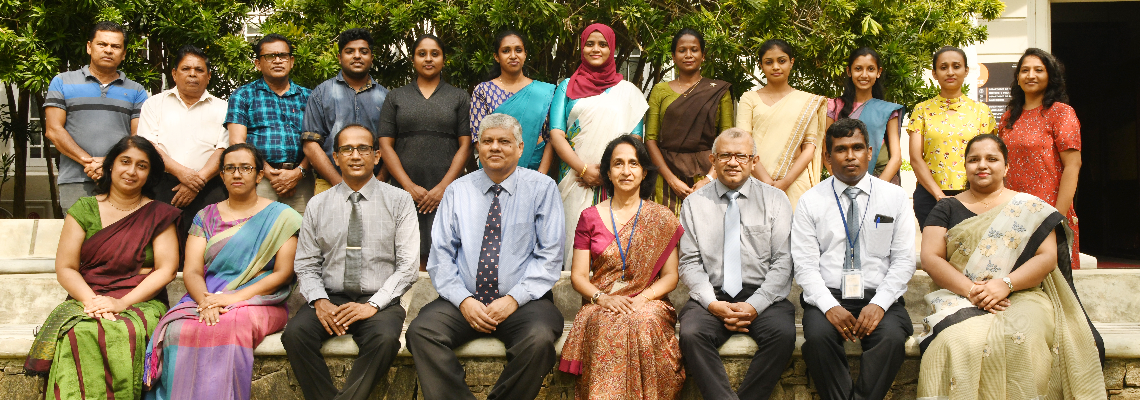
We are conducting many sub-projects to explore different areas of the research on leishmaniasis disease and those are segmented for a better understanding. These sub-projects are on going ones and we are adding more sections with the demanding nature of the TMRC Project. Check out the sub-projects below.
(CL) caused by the strain of Leishmania donovani has become a growing public health issue in Sri Lanka. There are several species of sandflies that belong to genera Phlebotomus and Sergentomiya reported in Sri Lanka. Among those P.argentipes was reported from several areas and the presence of L.donovani DNA within wild caught P.argentipes has been demonstrated. However, there is lack of evidence to incriminate it as the true vector of CL in Sri Lanka. Therefore, this study was designed to incriminate Phlebotomus argentipes as the true vector of intra cellular parasite Leishmania donovani which is the causative agent of Leishmaniasis in Sri Lanka. Furthermore, the ability of transmission of Leishmania donovani parasites during a blood meal and the Leishmania donovani development within the vector (Phlebotomus argentipes) will be studied. The results will be used to get a better understanding on vector bionomics for effective vector control planning.
(CL) caused by the strain of Leishmania donovani has become a growing public health issue in Sri Lanka. There are several species of sandflies that belong to genera Phlebotomus and Sergentomiya reported in Sri Lanka. Among those P.argentipes was reported from several areas and the presence of L.donovani DNA within wild caught P.argentipes has been demonstrated. However, there is lack of evidence to incriminate it as the true vector of CL in Sri Lanka. Therefore, this study was designed to incriminate Phlebotomus argentipes as the true vector of intra cellular parasite Leishmania donovani which is the causative agent of Leishmaniasis in Sri Lanka. Furthermore, the ability of transmission of Leishmania donovani parasites during a blood meal and the Leishmania donovani development within the vector (Phlebotomus argentipes) will be studied. The results will be used to get a better understanding on vector bionomics for effective vector control planning.
The endoplasmic reticulum (ER) is a vital cellular component that has an important role in several essential cellular functions such as protein synthesis, folding, maturation, and translocation. Alteration in physiological status and pathological conditions like bacterial, viral, or protozoan infections can cause ER stress which loss the ER homeostasis by disrupting the protein folding process. As a response to ER stress and to ensure cellular survival, ER induces an adaptive signaling cascade, collectively known as the Unfolded Protein Response (UPR). In eukaryotes, UPR is driven by three sensor proteins, namely, Inositol Requiring Enzyme 1 (IRE1), Protein Kinase RNA like ER kinase (PERK), and Activating Transcription Factor 6 (ATF6). According to current literature, the role of UPR in Leishmania infected cells is not yet fully understood. Therefore, the main objective of this research is to explore the role of the endoplasmic reticulum stress response pathway in human cutaneous leishmaniasis due to Leishmania donovani in Sri Lanka.
Leishmaniasis is a neglected disease which presents in three basic clinical forms according to the location of parasites in mammalian tissues: visceral, cutaneous and mucocutaneous leishmaniasis. An outbreak of cutaneous leishmaniasis (CL) in Sri Lanka became evident after 2001 but still relatively an unknown disease. Sandflies are vectors of Leishmania parasites and infected sandflies deliver the parasite to a mammalian host together with saliva during the acquisition of blood meal. This saliva contains potent pharmacologically active components that facilitate blood-feeding with anti-hemostatic, anti-inflammatory and immunomodulatory properties. Further, salivary proteins used to predict disease prevalence and also effectively used in development of vector control programmes. Very little is known about the properties and functions of salivary proteins and there is no promising national-level control program established in Sri Lanka to control CL infection. The study object is to evaluate salivary gland antigens of Phlebotomus argentipes as biomarkers of sandfly exposure and effectiveness of vector control interventions.
Leishmaniasis is an infectious disease that causes long lasting skin lesions. To date, many drugs have been using to treat leishmaniasis all over the world, whereas SSG being the first line of treatment albeit with reported drug resistance in many countries. Hence, there is a huge demand on the assessment of drug sensitivities and resistance of leishmania parasites, to come up with the best treatment strategies. Therefore, we decided to carry out studies to investigate the drug sensitivities of leishmania parasites isolated from lesion samples by conducting in vitro drug sensitivity assays using PBMC.
Altogether, this study would illustrate the parasite virulence levels that would ultimately modulate the suitability of SSG as an anti-leishmanial drug and will be useful to decide the effective doses for better outcomes.